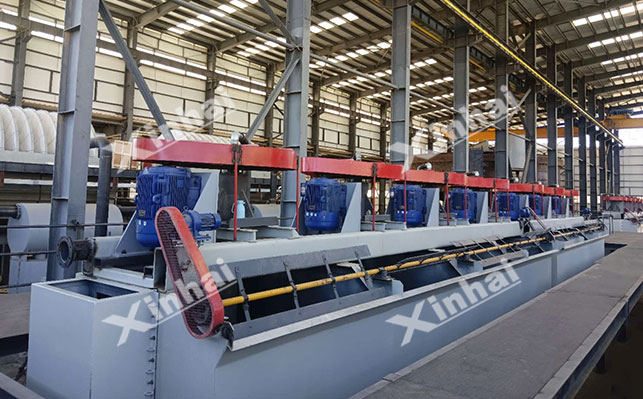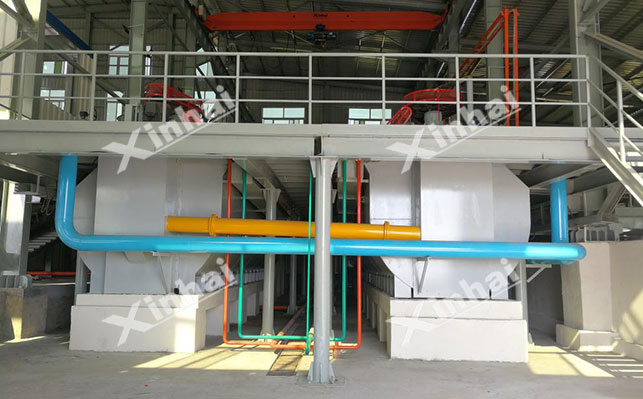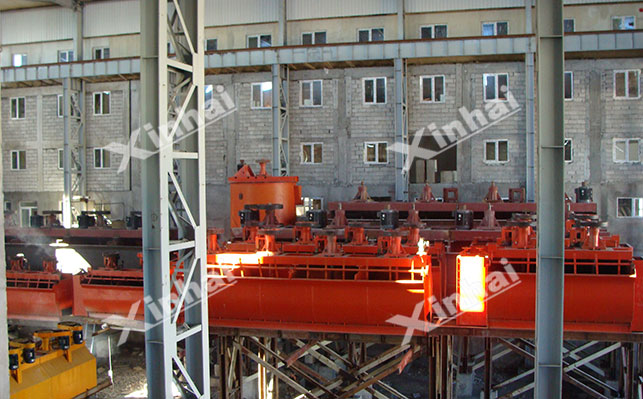
15311826613
Click to add WeChatRecently, copper prices have experienced a surge, attracting widespread market attention. Behind this price spike lie complex and profound reasons. Chile, a major global copper-producing region, has seen its mining transportation disrupted by severe weather, directly impacting the global copper market supply and demand. Simultaneously, the rapid development of the new energy industry has led to an explosive growth in copper demand. While demand continues to expand, traditional copper mines face the predicament of continuously declining ore grades and rising mining costs, further exacerbating market concerns about copper resource supply.
In this copper resource crisis, improving copper ore beneficiation recovery rates has become a key way to alleviate the tense situation. Effective beneficiation methods can not only extract more copper from existing ore but also, to some extent, compensate for the production gap caused by declining ore grades and supply disruptions. Next, let's delve into several common and effective copper ore beneficiation methods.

Copper Ore Flotation Method is mainly used for the recovery of fine-grained copper ore (-0.074mm), and is especially suitable for processing complex ores such as sulfide copper ore and polymetallic symbiotic ores, with a recovery rate of 85%-95%. The method involves using reagents to improve the physicochemical properties of the mineral surface, making it hydrophobic or hydrophilic. Hydrophobic minerals adhere to the frothing surface, are carried to the edge of the flotation cell, and are scraped off by scrapers, achieving separation. However, copper ore flotation has very high requirements for the reagent system. Furthermore, flotation is poorly adapted to copper ores with high mud content, easily leading to a "mud cover" phenomenon and a decrease in recovery rate.
Copper ore gravity separation is a low-cost beneficiation method. This method separates copper ore without the use of reagents and is mainly used for separating coarse copper particles > 0.5 mm. It is suitable for high-grade copper ore, while for low-grade copper, it is mostly used in the pretreatment stage, discarding large amounts of waste rock. During operation, gravity separation mainly utilizes the density difference between copper minerals and other minerals to achieve separation. In a gravitational field, minerals of different densities will move at different speeds and trajectories under the influence of water flow or other media. The denser copper minerals settle faster, while the less dense gangue minerals settle slower, thus achieving separation. Common gravity separation methods are divided into three types: jigging gravity separation, shaking table gravity separation, and sluice box gravity separation. Each type is suitable for different particle sizes, as detailed below:

Jig Gravity Separation: Suitable for processing coarse-grained copper ore (0.5-10mm). The equipment mainly utilizes periodic up-and-down pulsating water flow to force the ore particles to separate according to density within the chamber.
Shaking Table Gravity Separation: Suitable for processing medium and fine-grained copper ore (0.02-2mm). Through the symmetrical reciprocating motion of the table surface and the action of transverse water flow, the ore particles are separated on the table surface according to density and particle size.
Sluice gate gravity separation: Suitable for processing copper ores of 0.03-1mm size. It relies on the combined action of centrifugal force and gravity generated when the slurry flows within a spiral sluice gate to achieve mineral separation.
Magnetic separation is often used as a pretreatment step in copper ore beneficiation. Its purpose is to remove magnetic impurities from the minerals, thereby improving the beneficiation efficiency and concentrate quality. This method is only suitable for processing copper ores containing magnetic impurities and cannot directly recover copper; it needs to be used in conjunction with other methods. Depending on the magnetic differences of the magnetic impurities, strong magnetic separation or weak magnetic separation can be selected.

Chemical copper beneficiation is suitable for processing difficult-to-beneficiate copper or when conventional methods cannot achieve ideal recovery rates. This method can directly produce electrolytic copper. However, this method has a long process cycle, requires high ore permeability, consumes large amounts of acid and alkali, and has high environmental treatment costs.
Conventional chemical copper beneficiation methods may include a series of steps such as leaching, extraction, and electrolysis. Copper is dissolved from the ore through chemical reactions, and then further processing yields high-purity copper products.
Leaching: Depending on the ore properties and the type of copper mineral, methods such as acid leaching, alkaline leaching, or bacterial leaching can be used. For oxidized copper ores containing acidic gangue minerals, sulfuric acid is commonly used as the leaching agent to convert the copper minerals into soluble copper salts that enter the solution. Heap leaching: Particularly suitable for processing low-grade oxidized copper ores. The ore is piled in a designated area, and a leaching agent is sprayed on it. Through prolonged penetration and reaction, the copper dissolves.
Extraction: Utilizes the selective extraction of copper ions by an extractant to enrich the copper ions in the leachate and separate them from other impurities.
The characteristic of combined copper beneficiation methods is that they are determined by different combinations of methods to meet the recovery needs of coarse and fine-grained, single and polymetallic minerals. For some complex copper ores, when a single method is insufficient, a combined approach can be used to improve copper recovery. This method involves a complex process and high investment costs. Furthermore, it places high demands on the operation and management of the beneficiation plant.
The above is an introduction to several conventional copper ore beneficiation methods. Given the current scarcity of rich copper ore resources and the difficulty in processing lean copper ore, the rational application of effective beneficiation methods is crucial. Continuously optimizing the beneficiation process and improving copper recovery rates are of paramount importance for ensuring a stable supply of copper resources and promoting the sustainable development of related industries.
Effective copper ore beneficiation methods are not static, fixed models. Their main characteristics lie in the unity of adaptability, efficiency, and economy. "Tailor-made" methods for different mines are key to achieving this goal. Xinhai Minerals has extensive experience in copper ore beneficiation. In all its copper ore beneficiation projects, it designs tailored copper ore beneficiation processes based on the specific properties of the ore, through experimental analysis and considering the actual conditions of the beneficiation plant, effectively achieving high-efficiency copper recovery. Xinhai Minerals also provides EPC (Engineering, Procurement, and Construction) services for copper mining and beneficiation, including technical consulting and experimental research and mine design, complete equipment manufacturing and procurement, civil engineering construction and installation, commissioning and delivery, mine construction management, mine production operation management and services. Please feel free to contact us if you have any needs!
Yunnan 4400tpd Copper Mine Beneficiation Project:For this project, Xinhai, through experimental analysis of ore samples, tailored a process flow as follows: crushing and screening - grinding and classification - preferential flotation - magnetic separation for impurity removal.
Pakistan 1500tpd Copper Mine Beneficiation Project:This project is a full-chain mining service (ECP+M+O) project undertaken by Xinhai Minerals. Based on the ore properties analysis, the designed process flow is: two-stage semi-closed-circuit crushing - one-stage closed-circuit grinding - one roughing, two scavenging, two cleaning flotation - two-stage mechanical dewatering process flow. Ultimately, the copper concentrate recovery rate reached 90.05%.

Armenia 1500tpd Copper-Lead-Zinc Mine Project:This mine is a carbonate rock type deposit, with galena and sphalerite as the main metallic minerals. Using the two-stage closed-circuit crushing-one-stage autogenous grinding, lead rough concentrate regrinding-preferential flotation-two-stage dewatering process designed by Xinhai, the final recovery rate reached 90.49%.

Yunnan 1000tpd Copper Mine Beneficiation Project:Xinhai customized the following process for it: two-stage closed-circuit crushing and screening - one-stage closed-circuit grinding - copper flotation (one rougher, three scavengers, three cleaners) - sulfur flotation (one rougher, two scavengers, three cleaners) - concentrate dewatering - tailings dewatering process. The final product is copper concentrate, with a grade of 23.00%, a yield of 3.45%, and a copper recovery rate of 91.21%. It can supply 10,350 tons of copper concentrate to the market annually.